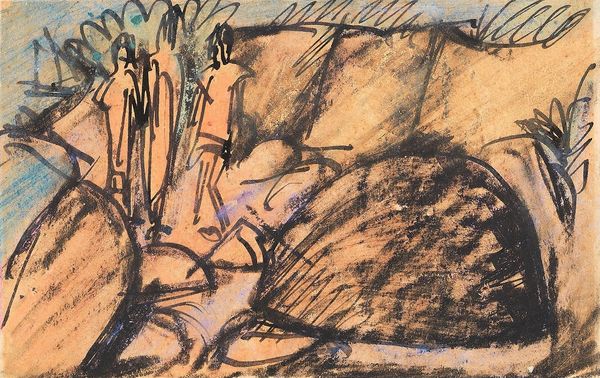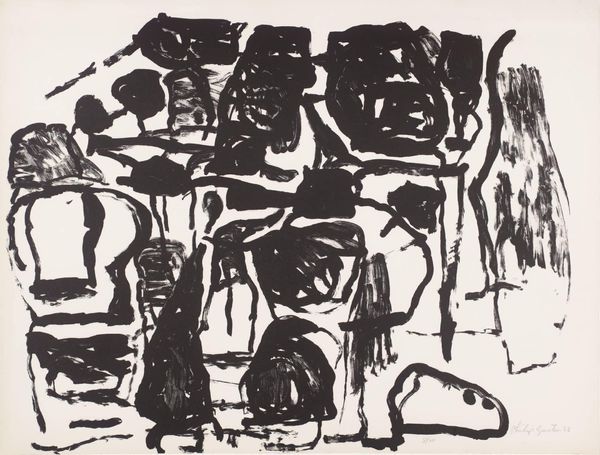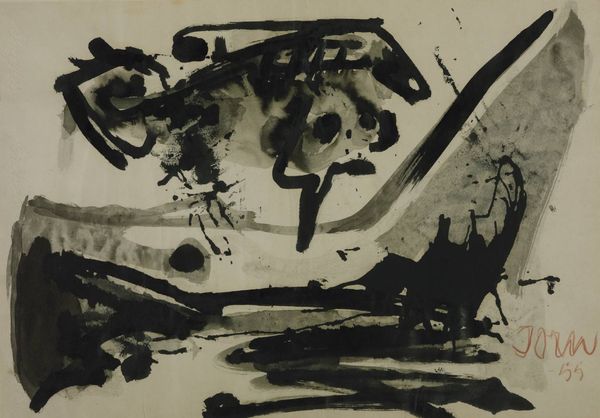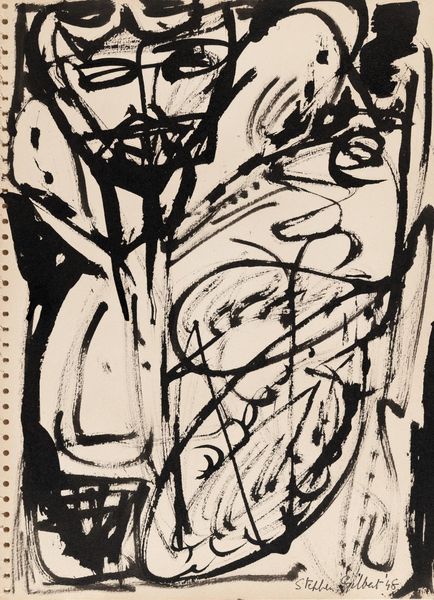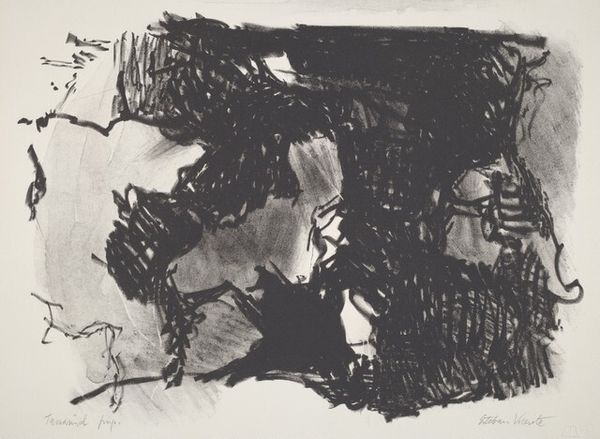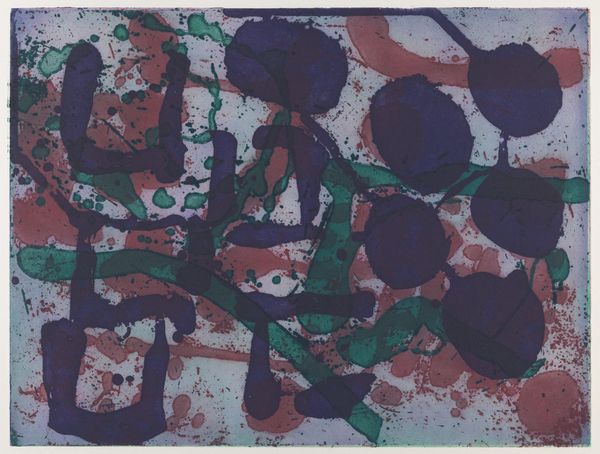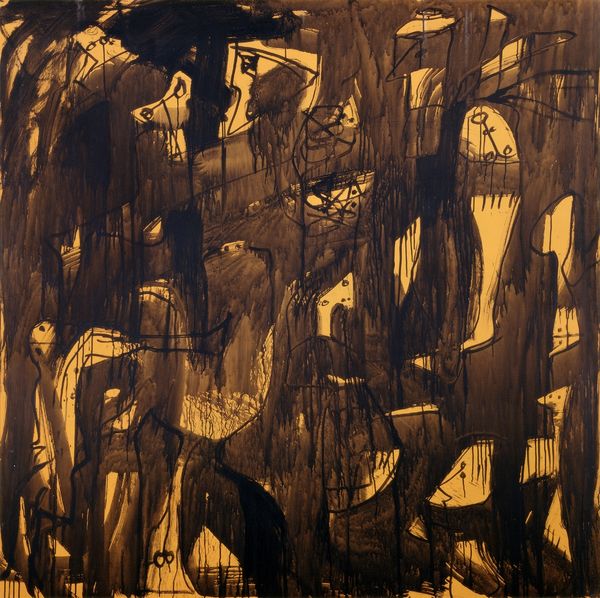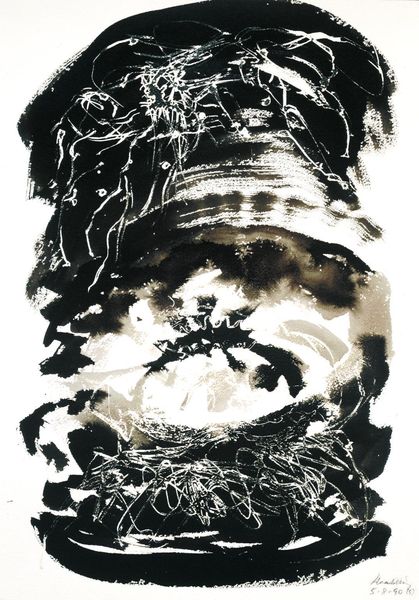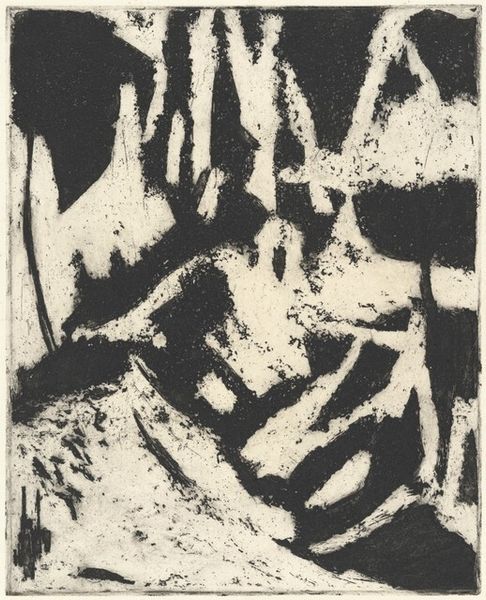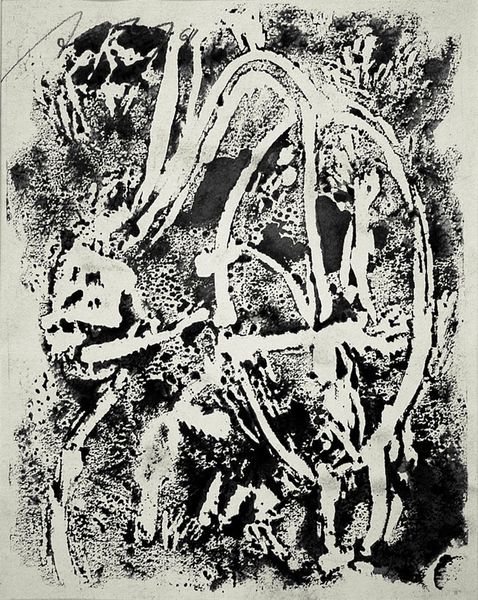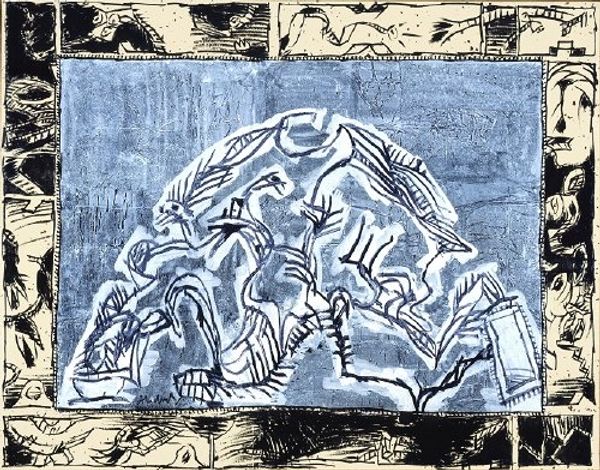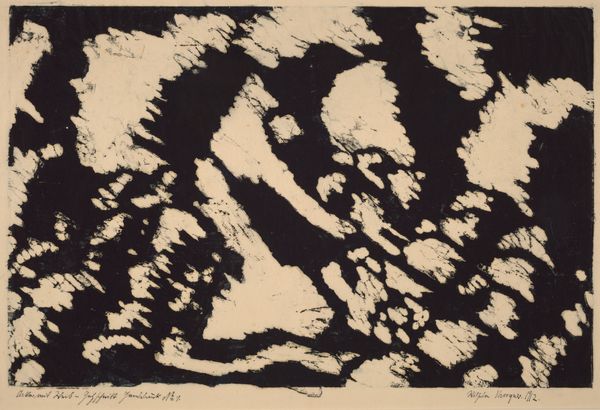
drawing, ink
#
drawing
#
ink painting
#
landscape
#
abstract
#
ink
#
expressionism
#
abstraction
Copyright: Public Domain: Artvee
Curator: Welcome. We are standing before Wassily Kandinsky's "Landscape with a Trumpet-Blowing Rider," created in 1909. This compelling work is rendered in ink on paper. Editor: It strikes me immediately as incredibly urgent. The bold strokes and the almost violent contrast of dark ink on white create a sense of imminent action or warning. What do you see? Curator: The composition is dynamic. See how Kandinsky uses line to suggest form, barely containing the figures and the landscape. It's a masterclass in expressionist economy, simplifying the representational to emphasize emotive power. Editor: It’s interesting that you mention emotive power, as it’s easy to consider the historic conditions around the piece, which predates the First World War by five years. This period in Europe saw escalating nationalism and looming war—a historical context to understand some of the emotional urgency embedded in the composition, wouldn't you agree? Curator: To a degree, I would agree. However, consider the internal logic of the piece: the stark juxtaposition of black and white amplifies the drama, the lines build into expressive shapes, but these aesthetic choices function irrespective of the contemporary situation of its creation. We need to ask why they work on a level of pure form. Editor: Form doesn’t exist in a vacuum. Even the colors that you allude to carry historical weight. For instance, what does it mean for the landscape to emerge as black against a white void during a historical period where increased division would turn European nations against one another? Can this trumpet blowing be some attempt at bridging ideological differences? Curator: Interesting interpretation. Still, Kandinsky isn't simply depicting a landscape, is he? The recognizable forms dissolve into near abstraction. The effect is more psychological, suggesting perhaps, a landscape of the mind rather than of external reality. The emotional quality comes from that formal struggle between representation and pure abstraction. Editor: And to conclude, perhaps this work reflects on a critical juncture in early 20th-century Europe—as reflected on a painter's mind—where conventional ways of seeing and thinking were proving insufficient to confront the complex reality of war. It calls on viewers like ourselves to find novel interpretations. Curator: Perhaps. Regardless, it remains an exceptional piece, demanding close attention to line, shape, and composition above all else.
Comments
No comments
Be the first to comment and join the conversation on the ultimate creative platform.
